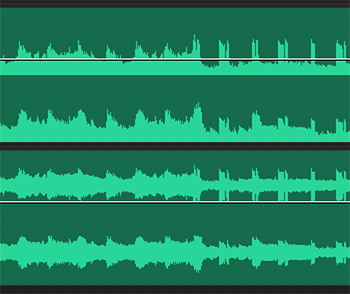Tip #948: What’s a Rectified Waveform?
… for Adobe Premiere Pro CC
Tip #948: What’s a Rectified Waveform?
Larry Jordan – LarryJordan.com
Rectified audio displays only the positive half of an audio waveform.


Another timeline display option in Premiere is “Rectified Audio Waveforms.” Any guesses what these are – and why you might use them?
All audio is a wave that travels through the air from its point of origination to our ears; or a microphone. When the sound is recorded, it is recorded as a wave, where the audio has both positive and negative values above and below a centerline. That centerline is defined as the place where audio has no volume.
The farther audio gets from the centerline, the louder it becomes.
However, seeing audio as a wave makes it harder to determine volume, because the loudest portions of a clip are at both the top and bottom of the wave.
To solve this problem, Premiere, like other NLEs, displays only half the audio wave – the positive values which are above the zero (center) line. This “sliced” version of audio is called “rectified.”
The entire wave is still captured and processed, but only the top half is displayed.
You can turn this display on or off using the fly-out (pancake) menu in the top-left corner of the timeline, next to the sequence name and uncheck Rectified Audio Waveforms.
The benefit to seeing the full wave is that, rarely, there may be audio level differences on one side of the wave but not the other. Most of the time, though, displaying audio as rectified will be fine.


I guess I never looked at it like this. If the waveform is bigger, it’s louder. And for me, “bigger” is easier to see with the “unrectified” version. But it’s a great tip to know if I ever work on a system where someone has selected that as the default view! Thanks.